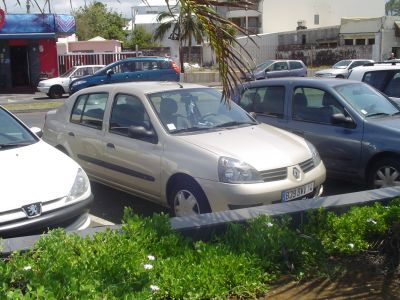 1973 Opel Kadett C Dimensions, Size & Specs
1973 Opel Kadett C Dimensions, Size & SpecsMeasurements of the 1973 Opel Kadett C, engineered for optimal performance and comfort
| Dimensions | |
|---|---|
| Length: | 4124 mm162.4 in13.5 ft |
| Width: | 1580-1590 mm62.2-62.6 in5.2-5.2 ft |
| Height: | 1375-1385 mm54.1-54.5 in4.5-4.5 ft |
| Trunk Capacity: | 420 liter14.8 cu ft |
| Trunk Capacity (Max): | 420 liter14.8 cu ft |
| Weight Specifications | |
| Curb Weight: | 785 kg1731 lbs |
| Maximal permitted Weight: | 1205 kg2657 lbs |
| Roof Load: | 60 kg132 lbs |
| Tire Specifications | |
| Rims Size: |
|
| Tire Sizes: |
|
The Opel Kadett C, produced between 1973 and 1979, is a classic compact sedan that epitomizes the design and utility of 1970s European cars. With a length of 4124 mm (162.2 inches), a width ranging from 1580 to 1590 mm (62.2 to 62.6 inches), and a height between 1375 and 1385 mm (54.1 to 54.5 inches), the Kadett C presents a well-proportioned body that balances interior space and urban maneuverability. Weighing in at a curb weight of approximately 785 kg (1,730 lbs) and reaching a maximum weight of 1205 kg (2,656 lbs), this lightweight sedan offers agile handling and fuel efficiency, making it well-suited for city driving and narrow roads typical in Europe. The luggage capacity stands at a practical 420 liters (14.8 cubic feet), which remains consistent even when the rear seats are folded down, allowing for versatile cargo space for everyday needs and modest family trips. The roof load capacity is rated at 60 kg (132 lbs), providing additional utility for carrying roof boxes or sports equipment. Equipped with 13-inch rims and tire sizes including 155/80 SR13, 155 SR13, and 155/80 R13, the Kadett C guarantees steady road grip and contributes to the vehicle's classic stance. As a representation of Opel's commitment to functionality and style during the 1970s, the Kadett C remains a notable model in the history of compact sedans, merging practicality with the automotive trends of its era.
Discover the standout features that make the 1973 Opel Kadett C a leader in its class
Have a question? Please check our knowledgebase first.
The Opel Kadett C sedan, produced between 1973 and 1979, measures 4124 mm (162.3 inches) in length. Its width ranges between 1580 and 1590 mm (62.2 to 62.6 inches), providing a compact stance suitable for urban and suburban driving. The height of the vehicle falls between 1375 and 1385 mm (54.1 to 54.5 inches), which contributes to a relatively low profile and sporty appearance typical of sedans from this era. These dimensions ensure that the Kadett C occupies a modest footprint, making it an agile car on narrow roads and easier to park compared to larger sedans.
The curb weight of the Opel Kadett C ranges around 785 kilograms (approximately 1,730 pounds), reflecting its lightweight and efficient design ideal for its time. This lightweight construction benefits fuel economy and handling characteristics. The maximum authorized weight that the vehicle can handle, often referred to as Gross Vehicle Weight Rating (GVWR), is 1205 kilograms (about 2,656 pounds). This includes the vehicle itself, passengers, cargo, and any additional equipment. Staying within these weight limits is critical for maintaining safety, proper suspension function, and overall vehicle integrity.
The Opel Kadett C offers a luggage capacity of 420 liters (approximately 14.8 cubic feet), which is quite generous for a compact sedan of its era. This capacity supports practical everyday use, such as grocery shopping, small trips, or carrying luggage for longer journeys. Interestingly, folding the rear seats does not increase the luggage capacity beyond these 420 liters, indicating that the rear cabin space is likely integrated with the trunk area design. This equals a practical rear compartment for medium-sized cargo and convenience, though those needing significantly more space might consider specialized transport solutions.
The Opel Kadett C came equipped with 13-inch rims, a common size for compact vehicles of that time. The tire sizes include 155/80 SR13, 155 SR13, and 155/80 R13 options, representing a narrow width and taller tire profile compared to modern standards. This setup contributed to a comfortable ride quality and efficient fuel consumption, given the vehicle’s weight and power output. The 13-inch rim diameter ensures accessibility of replacement tires and aligns with the car’s design for balanced road handling and practicality.
Yes, the Opel Kadett C fits comfortably into a standard residential garage. Typical single-car garages measure about 2,400 to 3,000 mm (7.9 to 9.8 feet) in width and at least 5,000 mm (16.4 feet) in length. With its length of 4124 mm (162.3 inches), width approximately 1580-1590 mm (62.2-62.6 inches), and height close to 1375-1385 mm (54.1-54.5 inches), the Kadett C is well within the size limits to park inside such spaces without difficulty. This makes it convenient for owners to safely store the vehicle and protect it from the elements in typical home garages.
Compared to its predecessor, the Kadett B, the Kadett C shows slight dimensional evolution reflecting design and engineering updates. The Kadett C’s length of 4124 mm (162.3 inches) is generally similar but often slightly longer or comparable to the Kadett B, which measured close to 4,000 mm (157.5 inches) depending on the body style. Width around 1580-1590 mm (62.2-62.6 inches) is comparable or a modest increase from the Kadett B's approximate 1570 mm (61.8 inches). Height remains similar, roughly around 1375-1385 mm (54.1-54.5 inches) versus the Kadett B’s also compact profile. These adjustments enhanced interior space and road presence without drastically altering its compact character.
When compared to other compact sedans of the 1970s, such as the Volkswagen Golf Mk1 and Ford Escort Mk2, the Opel Kadett C is quite typical in size and footprint. The Kadett C’s length of around 4124 mm (162.3 inches) is marginally longer than the first-gen Golf (about 3995 mm or 157.3 inches) but comparable to the Escort’s 4120 mm (162 inches). Its width, hovering around 1580-1590 mm (62.2-62.6 inches), is slightly narrower than some rivals but within a similar range, contributing to urban maneuverability. Height-wise, the Kadett's 1375-1385 mm (54.1-54.5 inches) is in line with other compact sedans of the era, balancing aerodynamic efficiency and interior space. Overall, the Kadett C fits squarely in its competitive segment size-wise.
The roof load capacity of the Opel Kadett C is specified as 60 kilograms (about 132 pounds). This capacity allows owners to safely install roof racks or cargo carriers for additional luggage, sports equipment, or camping gear, provided the total weight including the carrier does not exceed this limit. It is important to adhere to this maximum roof load to prevent damage to the vehicle’s roof structure and to maintain safe handling characteristics. For those needing to carry larger or heavier loads, other storage solutions or trailers would be advisable.
The Opel Kadett C’s curb weight of approximately 785 kilograms (1,730 pounds) provides several benefits in vehicle dynamics and ownership costs. A lower weight improves fuel efficiency, reducing running costs over time which is particularly important for economy-focused buyers. Additionally, lighter weight contributes to more agile handling, easier maneuverability, and shorter braking distances—important on narrow or winding roads common in urban and rural settings. The lighter chassis also reduces wear on components such as tires, brakes, and suspension, potentially lowering maintenance expenses. Overall, the Kadett C's light weight complements its design as a practical and efficient compact sedan.
The Opel Kadett C was fitted with 13-inch rims and tire sizes including 155/80 SR13, 155 SR13, and 155/80 R13. The relatively narrow tire width of 155 mm and taller sidewall profiles (80 series) provided a balance between ride comfort and grip. Taller tires absorb road irregularities better than low-profile tires, enhancing the comfort on less smooth roads common in the 1970s. Smaller rim size helps keep unsprung weight lower and replacement costs down, while the tire dimensions support stable handling at the moderate speeds typical of the era. These tire and rim characteristics were ideal for the Kadett’s lightweight chassis and target market.
Discover similar sized cars.

| Production: | 1990-2000 |
|---|---|
| Model Year: | 1990 |
| Length: | 4075 mm160.4 in |
| Width: | 1575 mm62.0 in |
| Height: | 1395 mm54.9 in |

| Production: | 1994-2000 |
|---|---|
| Model Year: | 1994 |
| Length: | 4085 mm160.8 in |
| Width: | 1620 mm63.8 in |
| Height: | 1390 mm54.7 in |

| Production: | 1994-2000 |
|---|---|
| Model Year: | 1994 |
| Length: | 4165 mm164.0 in |
| Width: | 1665 mm65.6 in |
| Height: | 1450 mm57.1 in |

| Production: | 1995-2004 |
|---|---|
| Model Year: | 1994 |
| Length: | 4075-4090 mm160.4-161.0 in |
| Width: | 1575 mm62.0 in |
| Height: | 1395 mm54.9 in |

| Production: | 1995-1999 |
|---|---|
| Model Year: | 1995 |
| Length: | 4117 mm162.1 in |
| Width: | 1620 mm63.8 in |
| Height: | 1394 mm54.9 in |

| Production: | 2002-2008 |
|---|---|
| Model Year: | 2002 |
| Length: | 4171 mm164.2 in |
| Width: | 1639 mm64.5 in |
| Height: | 1437 mm56.6 in |
